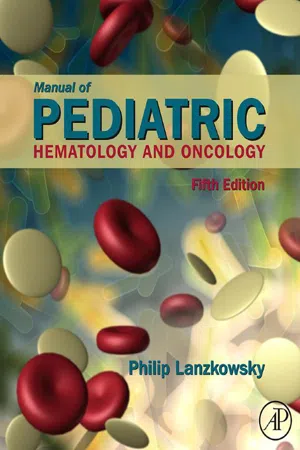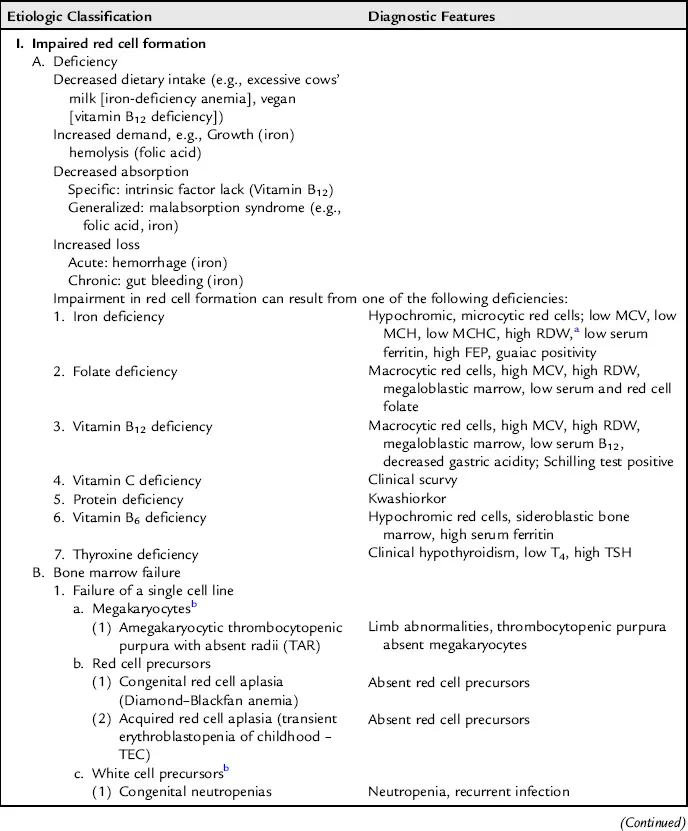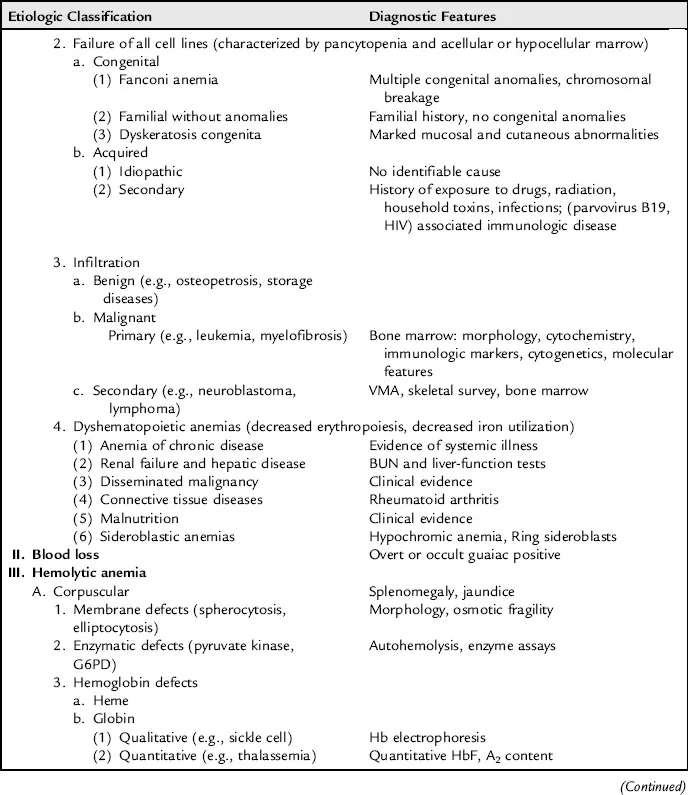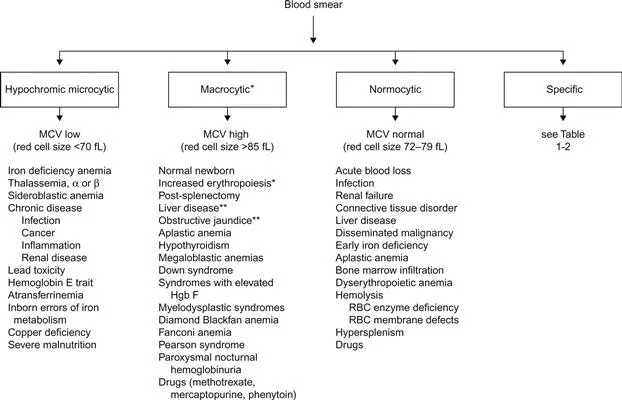
- 1,058 pages
- English
- ePUB (mobile friendly)
- Available on iOS & Android
Manual of Pediatric Hematology and Oncology
About this book
Given that there have been considerable advances in the treatment and management of oncologic diseases in children, the fifth edition of this successful clinical manual will be entirely updated to incorporate all current protocols and developments.This edition will be a comprehensive book on patient management, replete with algorithms and flow diagrams on diagnosis and management. Its concise and easy-to-read format will enable readers to make accurate diagnoses and permit them to treat patients without having extensive previous hematologic/oncologic experience. A list of normal values at various ages in children, providing an extremely useful reference for patient management is included.- Selected for inclusion in Doody's Core Titles 2013, an essential collection development tool for health sciences libraries- Offers a concise, systematic approach to all pediatric hematologic and oncologic disorders in one reference manual- Easy-to-read format: multiple tables, charts, and flow-diagrams for diagnosis and management of pediatric hematologic and oncologic disorders- Clear presentation by practicing clinicians, who are also academic researchers, of recent developments in molecular genetics, cytogenetics, immunology, transplantation, and biochemistry
Frequently asked questions
- Essential is ideal for learners and professionals who enjoy exploring a wide range of subjects. Access the Essential Library with 800,000+ trusted titles and best-sellers across business, personal growth, and the humanities. Includes unlimited reading time and Standard Read Aloud voice.
- Complete: Perfect for advanced learners and researchers needing full, unrestricted access. Unlock 1.4M+ books across hundreds of subjects, including academic and specialized titles. The Complete Plan also includes advanced features like Premium Read Aloud and Research Assistant.
Please note we cannot support devices running on iOS 13 and Android 7 or earlier. Learn more about using the app.
Information
Chapter 1
Classification and Diagnosis of Anemia in Children




Increased surface/volume ratio (generally does not effect red cell survival)
Decreased surface/volume ratio, hyperdense (>MCHC)
Table of contents
- Cover image
- Title page
- Table of Contents
- Copyright
- Dedication
- Contributors
- Introduction Reflection on 50 Years of Progress in Pediatric Hematology-Oncology
- Preface to the Fifth Edition
- Preface to the Fourth Edition
- Preface to the Third Edition
- Preface to the Second Edition
- Preface to the First Edition
- Chapter 1. Classification and Diagnosis of Anemia in Children
- Chapter 2. Anemia During the Neonatal Period
- Chapter 3. Iron-Deficiency Anemia
- Chapter 4. Megaloblastic Anemia
- Chapter 5. Hematologic Manifestations of Systemic Illness
- Chapter 6. Bone Marrow Failure
- Chapter 7. Red Cell Membrane and Enzyme Defects
- Chapter 8. Hemoglobinopathies
- Chapter 9. Extracorpuscular Hemolytic Anemia
- Chapter 10. Polycythemia
- Chapter 11. Disorders of White Blood Cells
- Chapter 12. Disorders of Platelets
- Chapter 13. Hemostatic Disorders
- Chapter 14. Thrombotic Disorders
- Chapter 15. Lymphadenopathy and Splenomegaly
- Chapter 16. Lymphoproliferative Disorders, Myelodysplastic Syndromes and Myeloproliferative Disorders
- Chapter 17. Leukemias
- Chapter 18. Histiocytosis Syndromes
- Chapter 19. Hodgkin Lymphoma
- Chapter 20. Non-Hodgkin Lymphoma
- Chapter 21. Central Nervous System Malignancies
- Chapter 22. Neuroblastoma
- Chapter 23. Renal Tumors
- Chapter 24. Rhabdomyosarcoma and Other Soft-Tissue Sarcomas
- Chapter 25. Malignant Bone Tumors
- Chapter 26. Retinoblastoma
- Chapter 27. Germ Cell Tumors
- Chapter 28. Hepatic Tumors
- Chapter 29. Hematopoietic Stem Cell Transplantation
- Chapter 30. Management of Oncologic Emergencies
- Chapter 31. Supportive Care of Patients with Cancer
- Chapter 32. Evaluation, Investigations and Management of Late Effects of Childhood Cancer
- Chapter 33. Psychosocial Aspects of Cancer for Children and their Families
- Appendix 1: Hematological Reference Values
- Appendix 2: Biological Tumor Markers
- Appendix 3: Pharmacologic Properties of Commonly used Anticancer Drugs
- Index